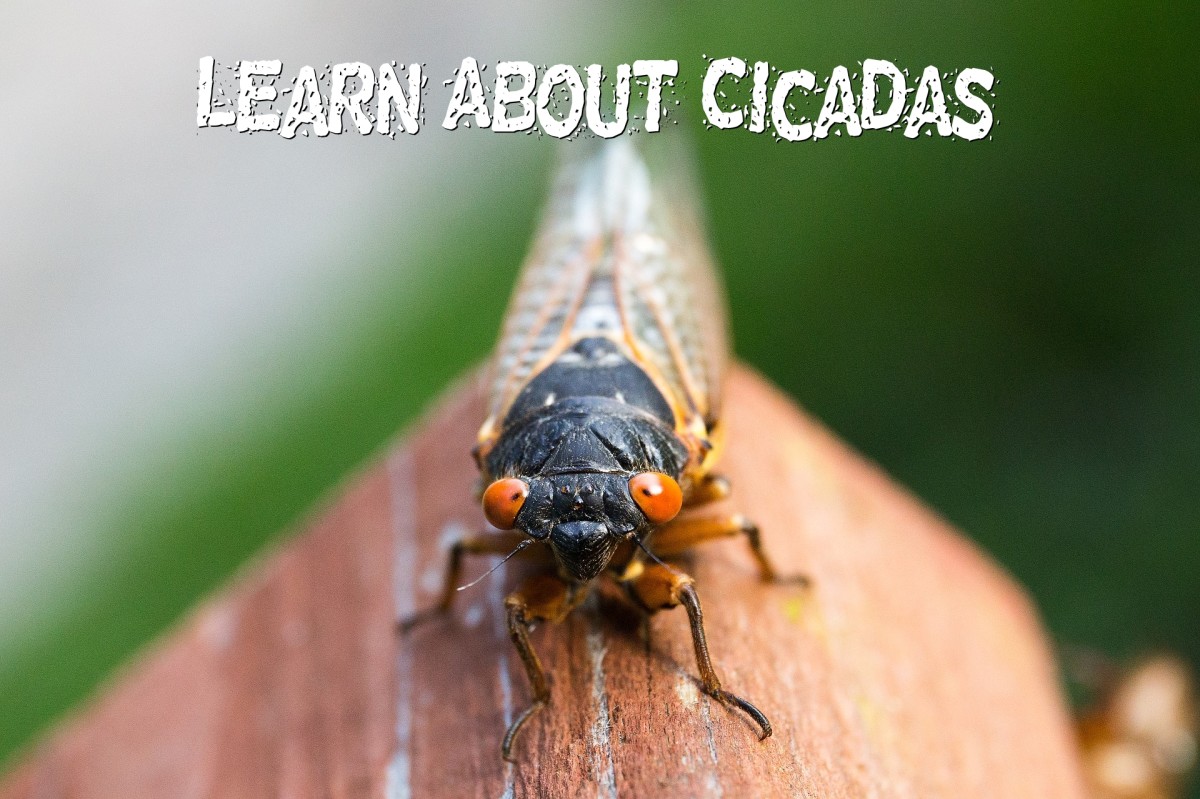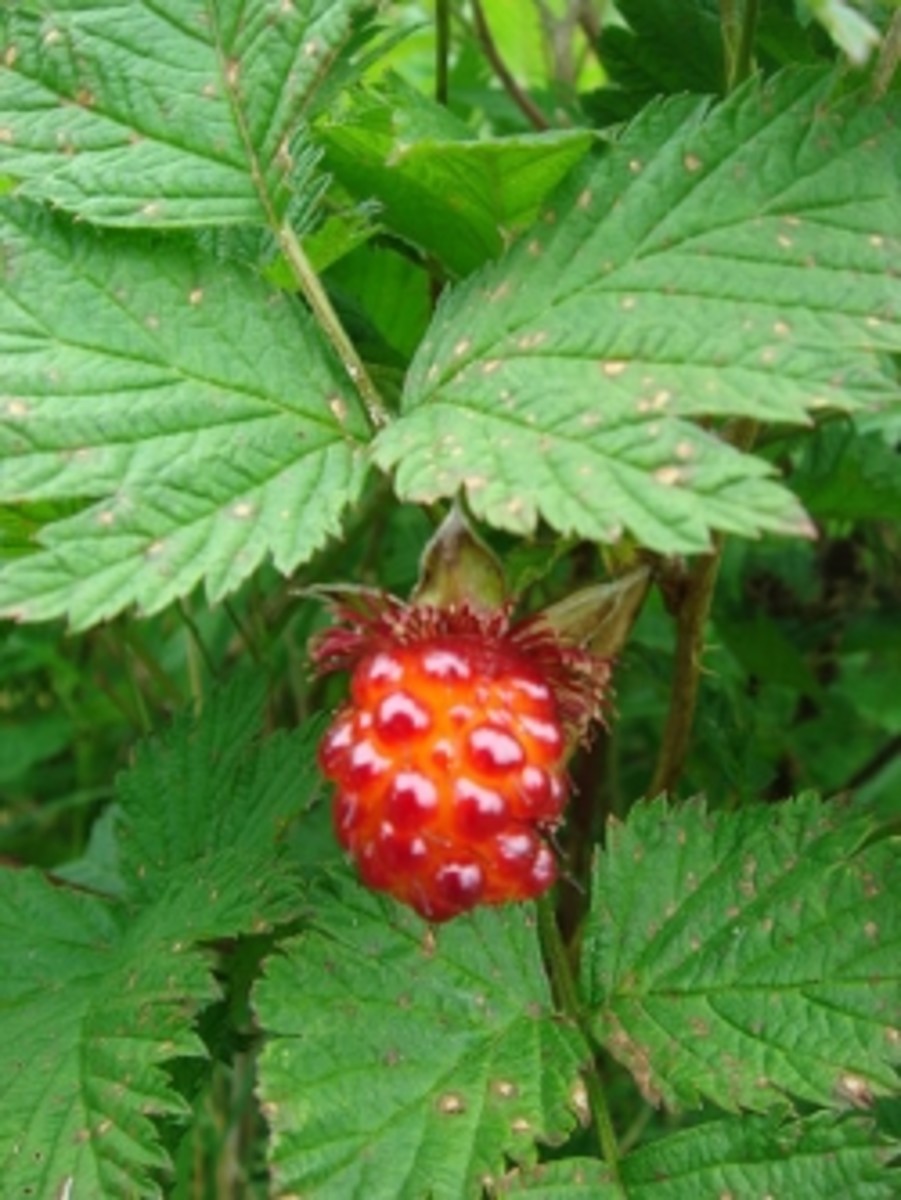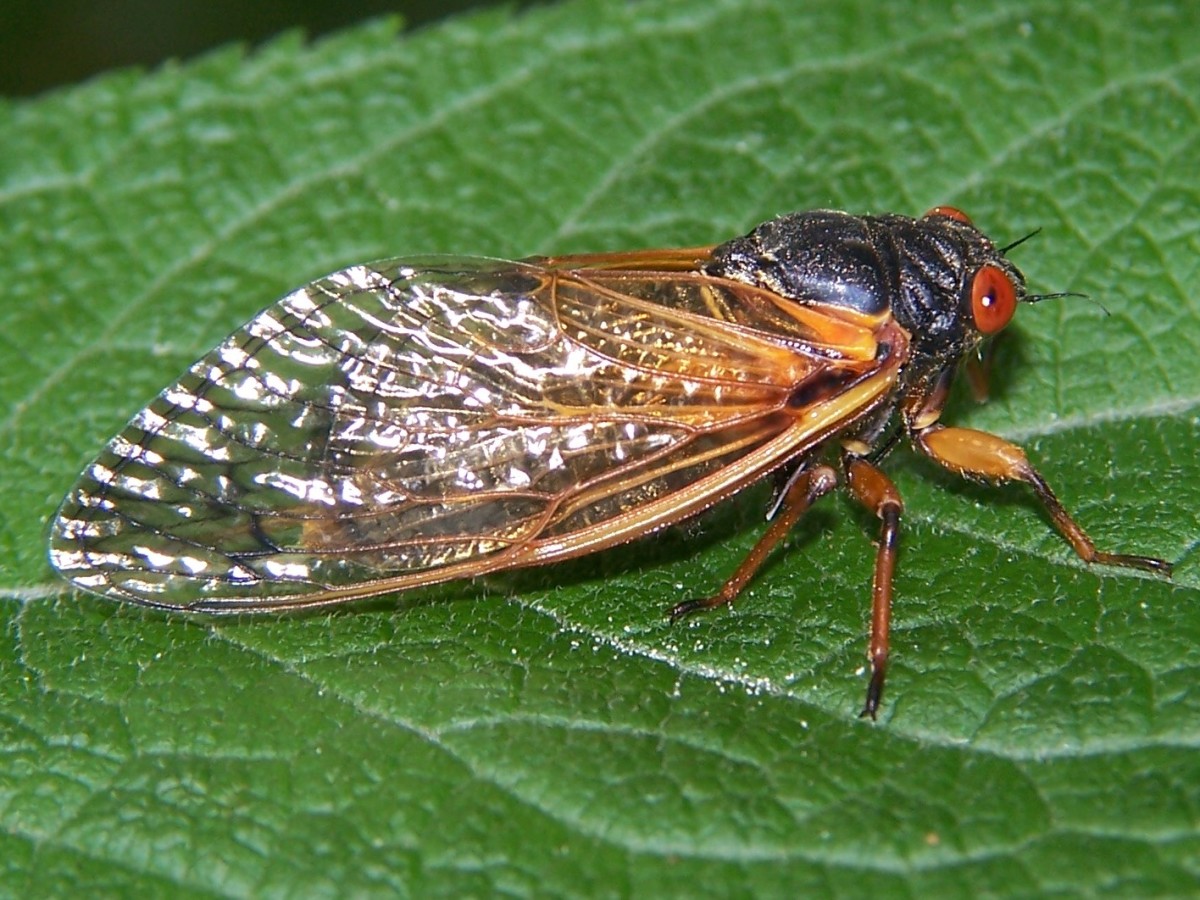Cicada Invasion: How To Save Your Trees and Shrubs
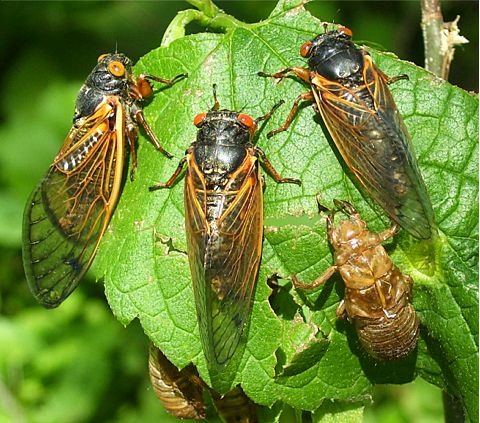
Who Are These Ugly Buggers and Where Did They Come From?
If you live in the Southeastern United States, you are no stranger to the high pitched song of the cicada. You have no doubt seen their husks clutching the trees after their mating season is complete. They are there every year and generally speaking they are not really a nuisance to most of us. But every so often, those cicadas seem to explode in number, invading parts our corner of the country by the hundreds of thousands, possibly into the millions. This is because there are two types of cicadas -- annual and periodical cicadas.
Annual cicadas are around every year, though each generation's life cycle actually takes more than a year. However, because there are overlapping generations, annual cicadas appear every year. Periodical cicadas, on the other hand, takes many years -- either thirteen or seventeen years depending on the brood -- for a generation to appear. Annual and periodical cicadas have a similar life cycle other than the time frames involved.
The adult cicadas mate and the females lay their eggs. The eggs hatch and the newborn cicadas drop to the ground and burrow beneath the soil and become nymphs, living off of root sap several feet underground. There they will remain for anywhere from two years to seventeen years depending on the particular species. At that point, they emerge from the ground, attach themselves to a tree or shrub, and shed their skin to become a winged adult. They then begin the process all over, living only a few days as an adult.
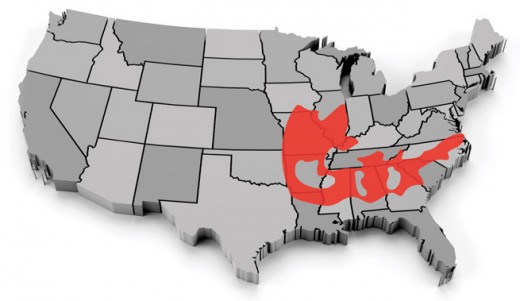
There are currently fifteen known broods of periodical cicadas with twelve on a seventeen year cycle and three on a thirteen year cycle. This year, Brood XIX will emerge in parts of fifteen states with heavy concentrations in nine of those states (see map at right). Also known as the Great Southern Brood, Brood XIX is one of the broods on a thirteen year cycle and last appeared in 1998. From late April until sometime in June, these destructive pests will emerge en masse.
Most insects have some sort of survival mechanism to sustain their species and defend against predators. Examples of these mechanisms are potent stingers, poisonous bites and bitter taste. The cicada broods survive simply by the massive size of the brood. While this may be beneficial to the cicadas as a whole, it can play havoc with the plant life that provides the cicadas a place to lay their eggs. And if that plant life happens to be decorating your perfectly manicured lawn, it can be a personal tragedy for you!
The Beetle and the Damage Done
Technically cicadas are not beetles. Nor are they spiritually, literally, emotionally or even generally beetles. In fact, they are only related to beetles to the extent that both are insects. (The title of this section is a reference to a Neil Young song, though admittedly a totally unrelated Neil Young song. I am a music fan, so I stretched a bit.) There are around 2500 species of cicadas worldwide and the Great Southern Brood is made up of four distinct species. That is four species of baby mamas looking for a place to plant their eggs. Most periodical broods contain three species. One brood, Brood VII also known as the Onondaga Brood, contains only one species.
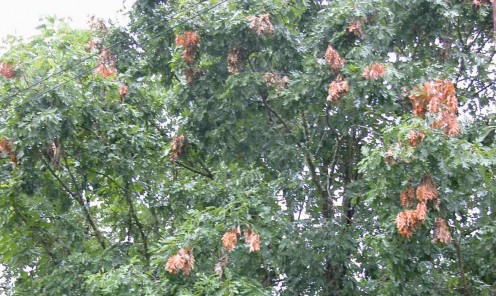
While cicadas can feed on the liquids in trees, for the most part adult cicadas are only concerned with mating and do not eat. What little damage they do from feeding is very minor and is quickly replenished by the plant. The real
damage is done to trees and shrubs when the female cuts into the
branches to lay her eggs. Ultimately this kills a part of the tree leaving unsightly blotches of brown leaves and deadwood among the otherwise lush greenery of the plant.This is known as flagging and can be quite unsightly.
There is no insecticide that works with cicadas. Nothing has been found that can be sprayed or planted to discourage them from making use of the first acceptable tree or shrub that can be found. When it is time to lay her eggs, the female cicada will just pick a convenient spot and set up house. So what the heck is the backyard gardener supposed to do to protect their beautiful green lawn?
How To Protect Your Lawn from the Invading Brood
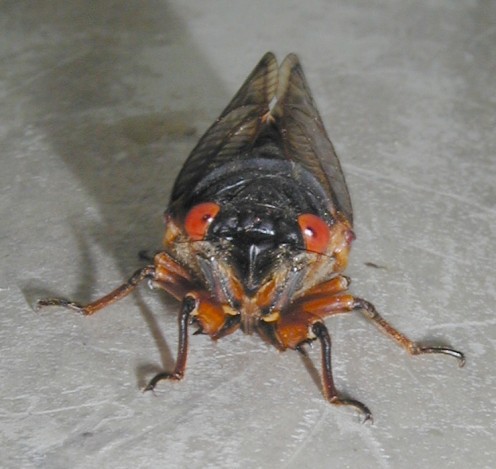
For the most part, cicadas will leave small plants and flowers alone. But trees and shrubbery are a completely different story. It is deep within the branches of these plants that the females will plant their eggs and it is this process of cutting into the plant and inserting the eggs that does the damage to the plant life. Mature trees usually survive with only some unsightly cosmetic damage that is repaired over time, but younger plants or smaller shrubs may not be so lucky.
The best way to protect trees and shrubs from the egg-laying females is with netting. You will need to obtain netting that has holes big enough to allow air and water to reach the plant but too small for the cicadas to get through. This will prevent the cicadas from flying to those plants and digging in to lay the hundreds of eggs the females produce. If you cannot protect all your trees and shrubs, concentrate on the younger trees and smaller shrubs as the older, larger plants will almost certainly survive the invasion without permanent damage.
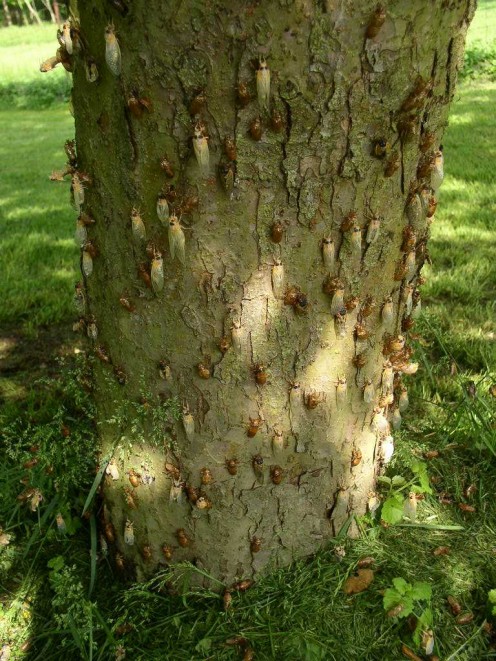
One of the really nice things about this method of protection is no one gets hurt. Unlike pesticides, the use of netting will not kill the cicadas. It simply makes them move to another neighborhood. If you happen to be someone who prefers to avoid needlessly killing large quantities of living creatures, then this will certainly have an irresistible appeal. But if you absolutely must have death and dismemberment to feel superior to Mother Nature, there are a couple of other less efficient options...
- Add bird feeders to increase the number of birds visiting your yard. While they will come for the free bird seed, they will opt for a juicy cicada when the opportunity presents itself.
- Invite a few dozen moles into your yard. While this will totally ruin your turf, they do eat the cicada nymphs like there is no tomorrow. Of course, you need to do this before the cicada emerge from the ground.
- Infest your yard with a large number of rodents, small mammals, and insects such as praying mantises, all of whom feed on cicadas. I would suggest the infamous cicada killer wasp, but they are not around until July when the annual cicadas make their appearance and so are useless in dealing with the periodical cicadas. Besides, now you are really going over the edge. Trust me... just buy some netting.
The Invasion Continues...
There will be a periodical brood of cicadas emerging every year from now until the year 2021 with two broods in 2014 and 2015. These broods do not overlap so it will not be particularly noticeable that more than one brood has emerged. After a break of two years, 2024 will also see a double shot of cicadas. Single broods will emerge every year for the next few years after that with the exception of 2026 when no brood is scheduled to appear.
Nothing you do will be 100% effective against the cicadas, but experts agree your best bet is to use netting. Any natural predator you attract will have some sort of adverse effect. Even birds. Not only do they... well, poop a lot, but they will also eat all your caterpillars leaving you with very few moths and butterflies. That kind of sucks.
And actually, you may want a few extra birds or you might have a problem with the caterpillars eating your smaller plants as the birds will opt for the cicadas leaving an unusually large population of caterpillars who will most assuredly go on a serious munching rampage.
And praying mantises? Those things are creepier than cicadas.
One Last Disgusting Detail...
As hard as it is to believe, people around the world eat these things with the female being preferable due to her being a bit "meatier". Yuck! I know what you are thinking... Why did I have to tell you this? I really do not know, but every article I read to research this mentioned it, so it seemed like I should to. I wish I had not, but there is no going back now. Well, I guess I could edit the hub and remove it, but if I have to have this gross image in my head, so do you. Misery loves company!

